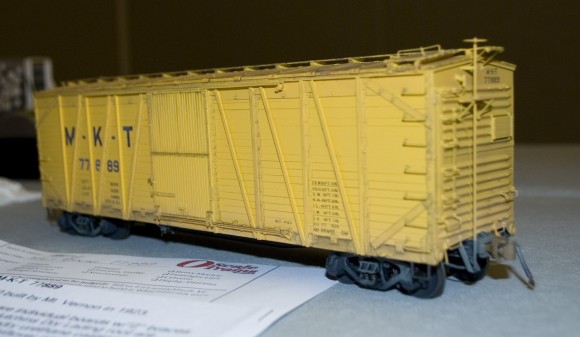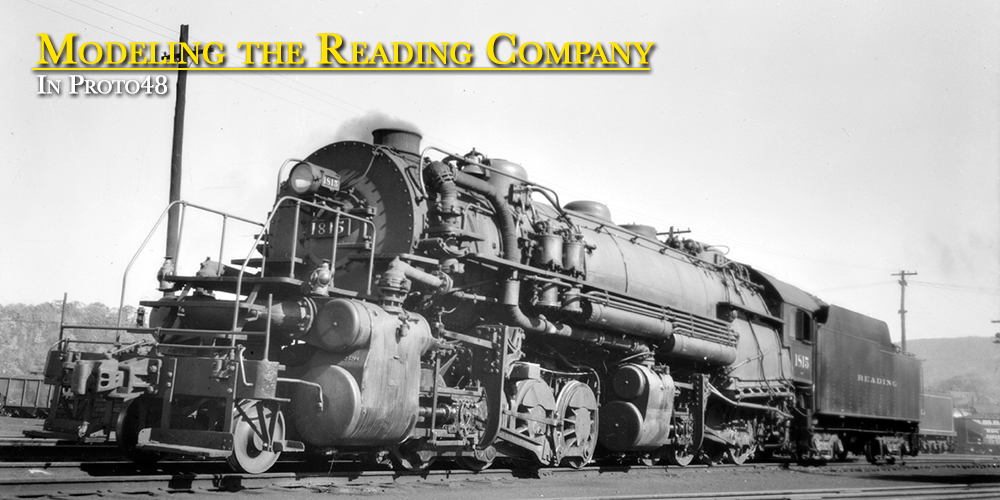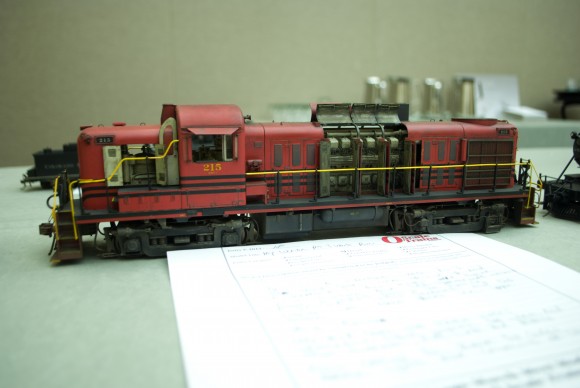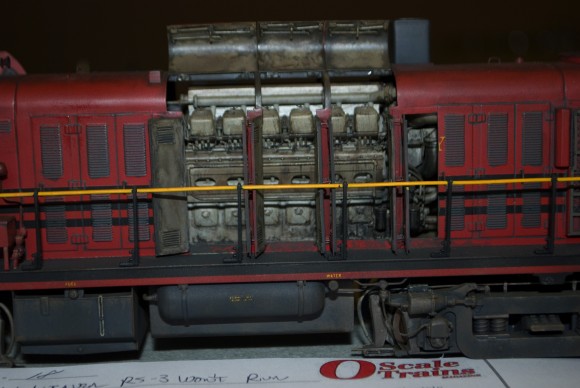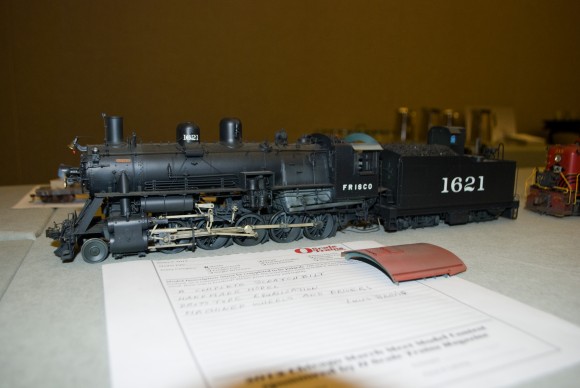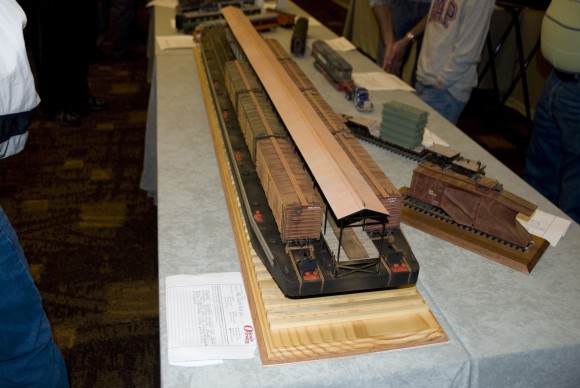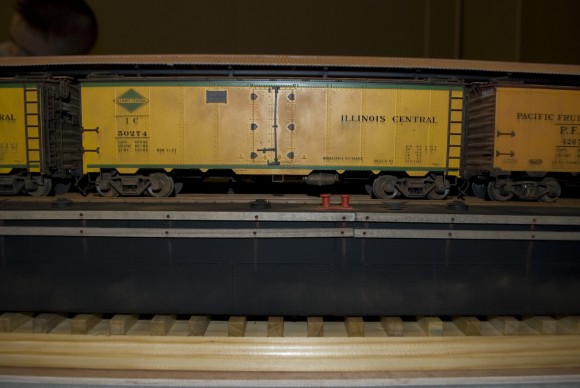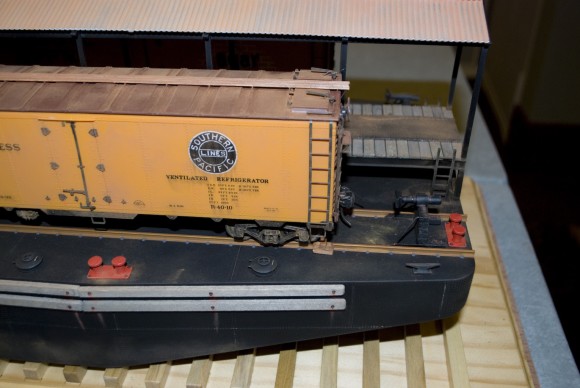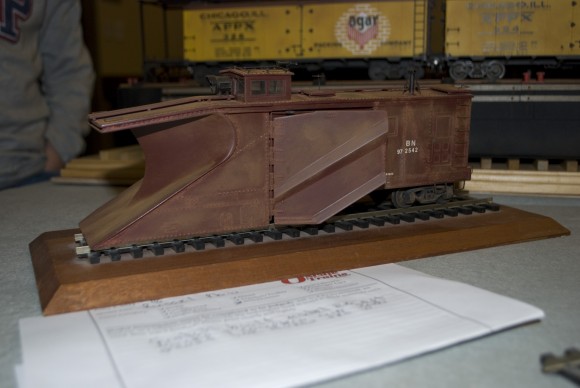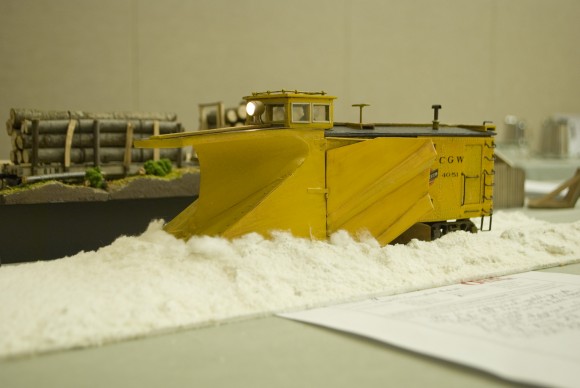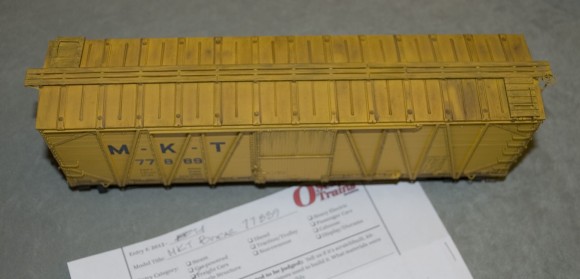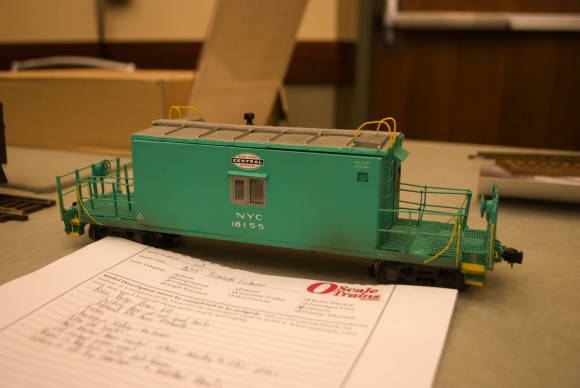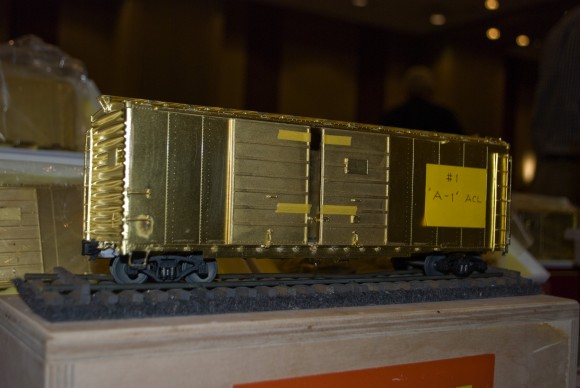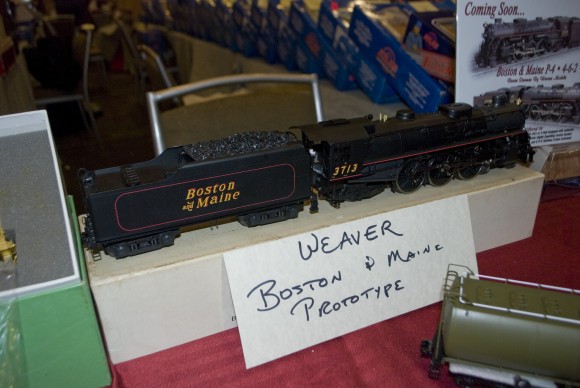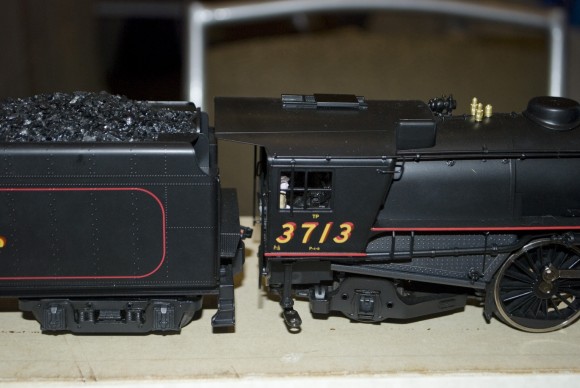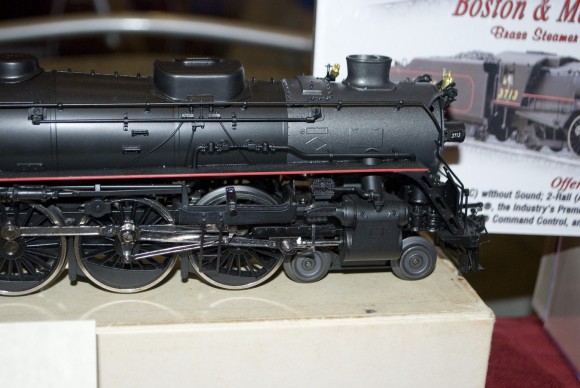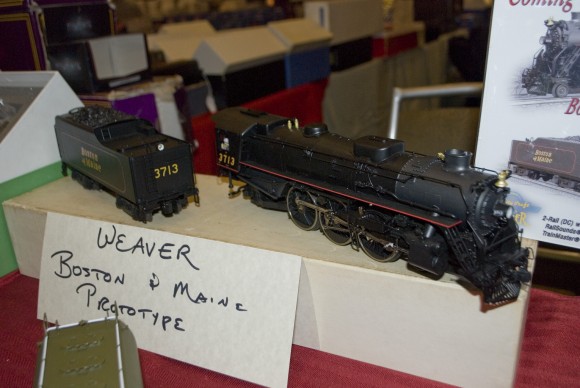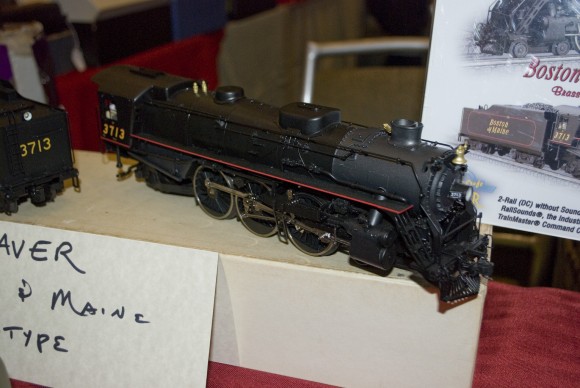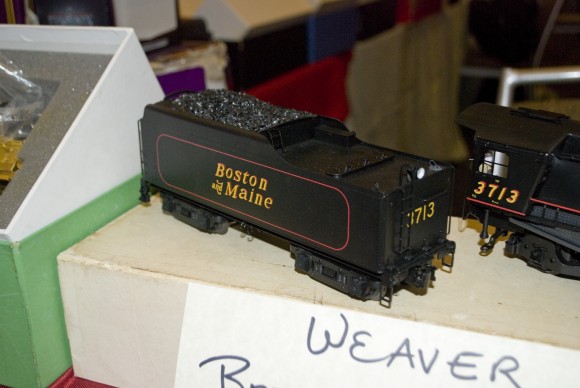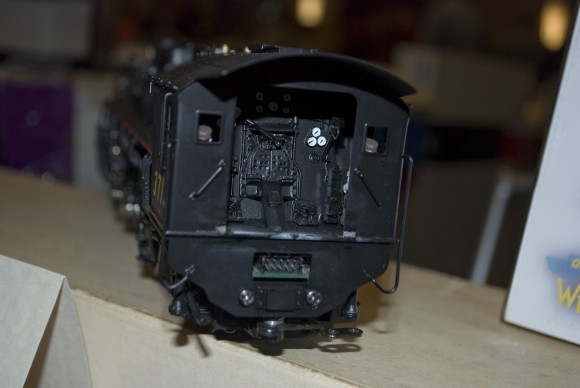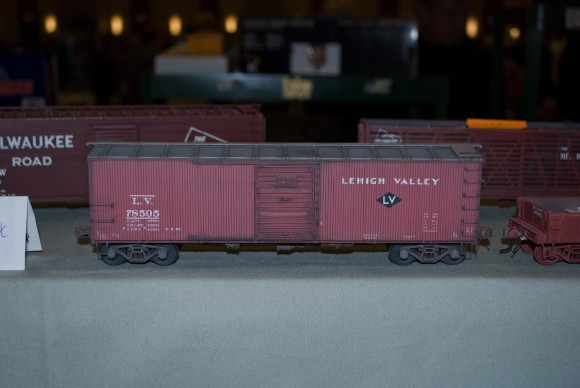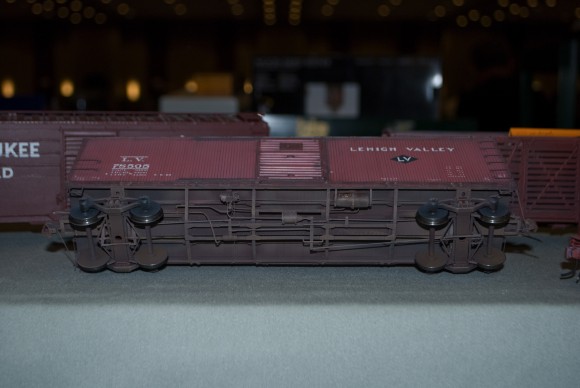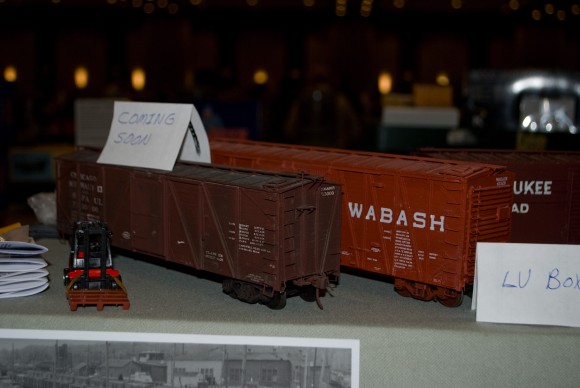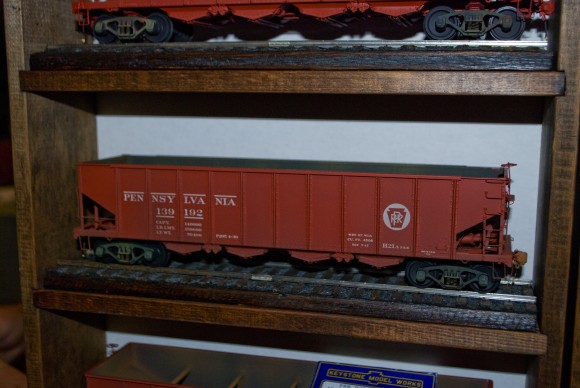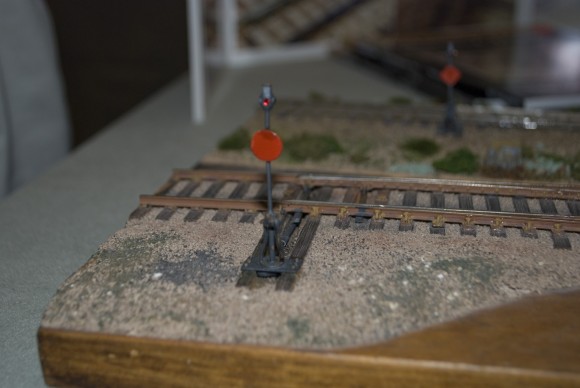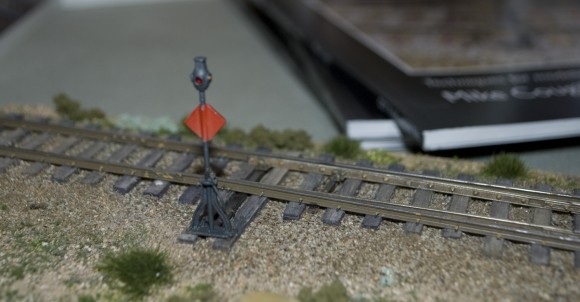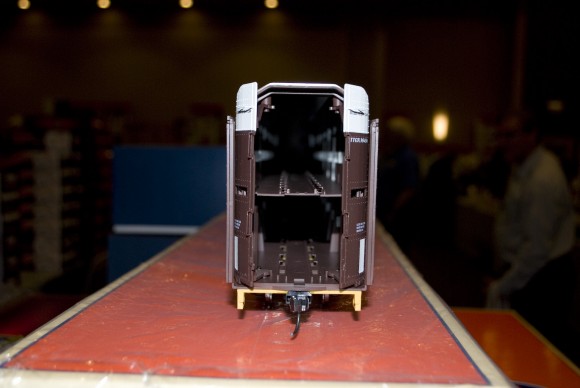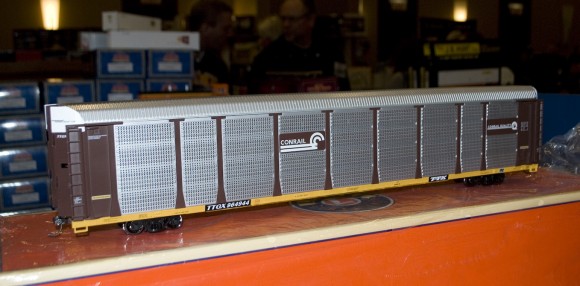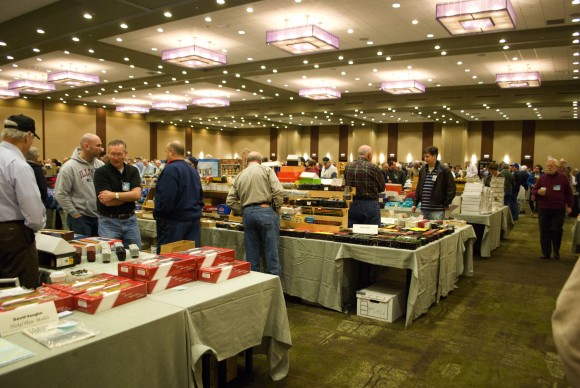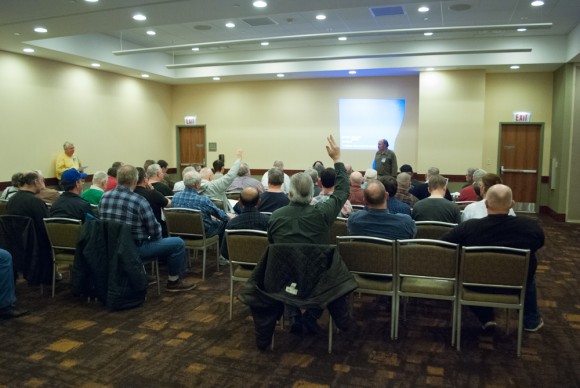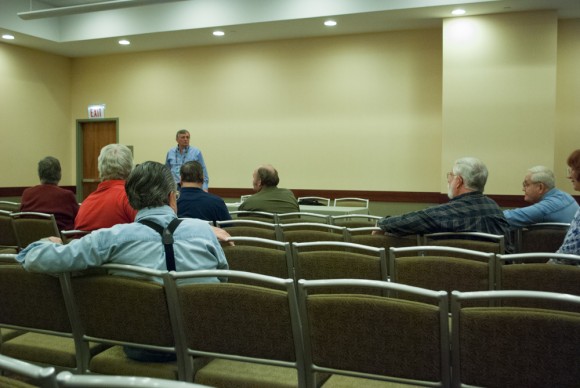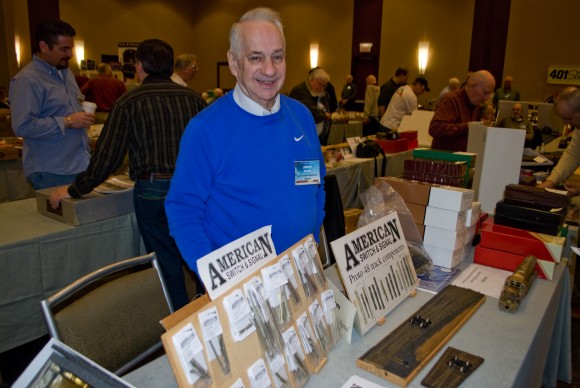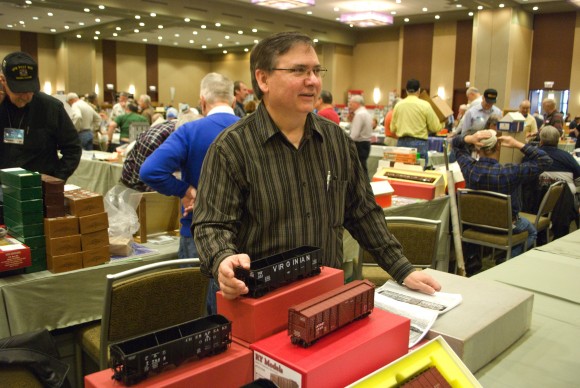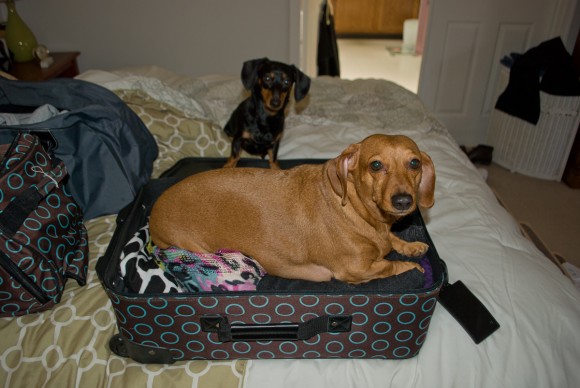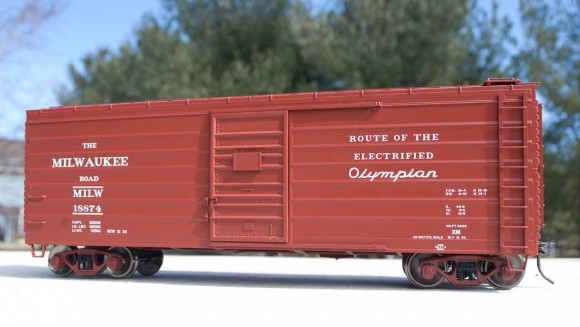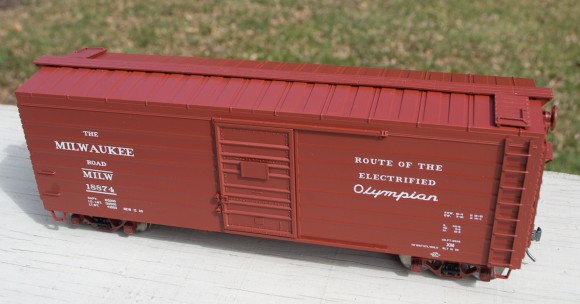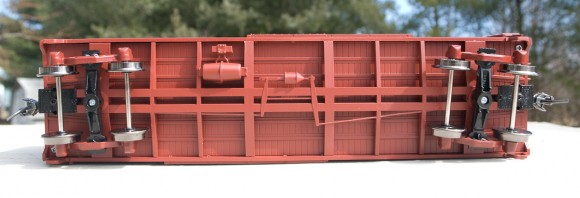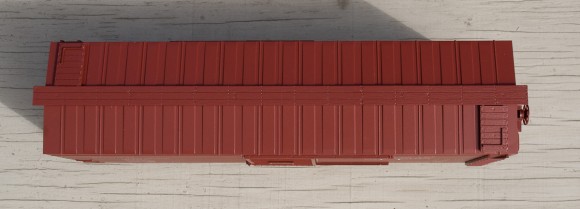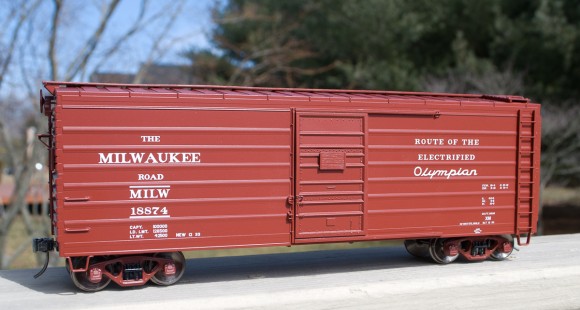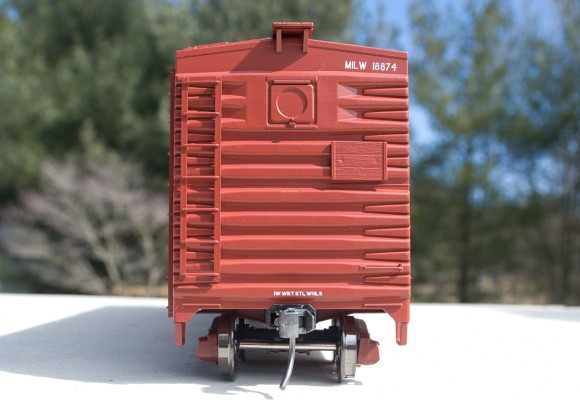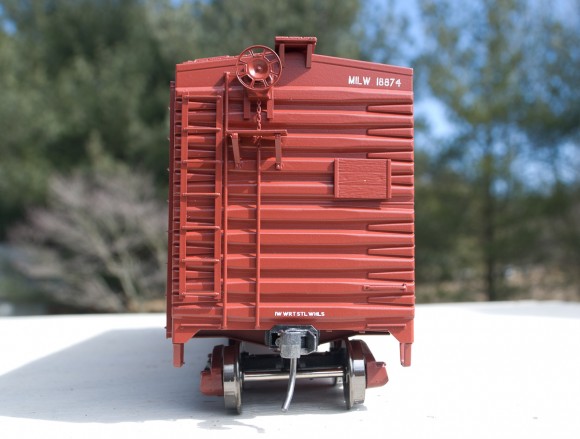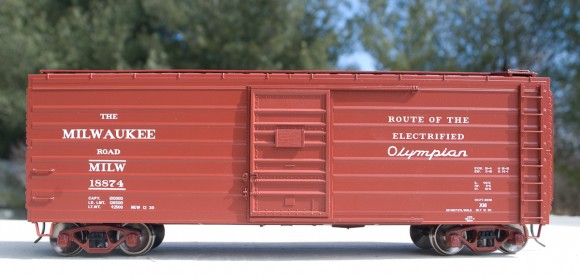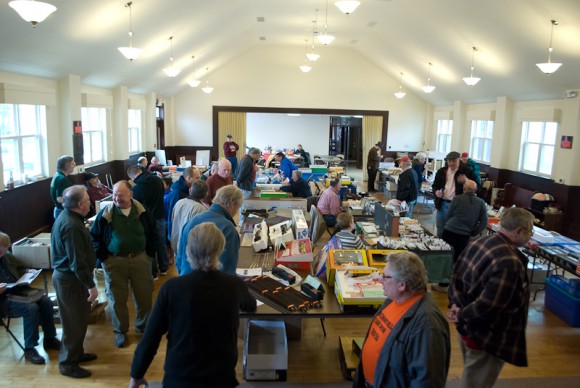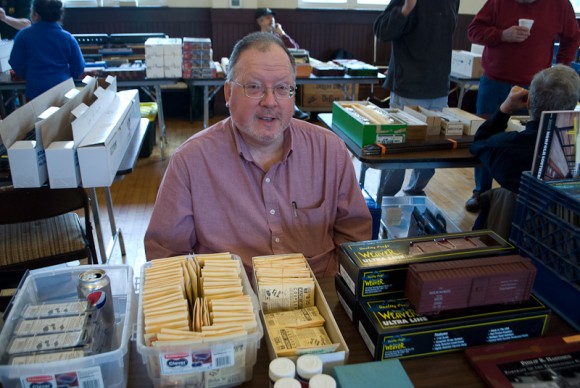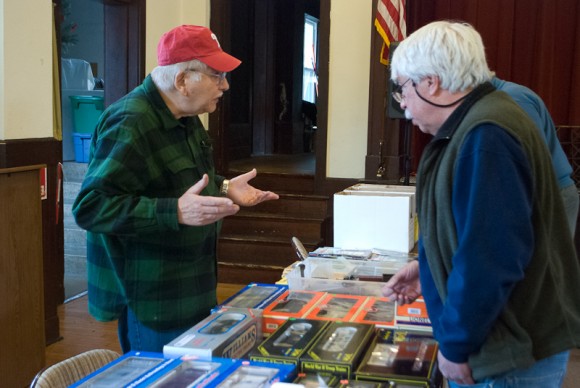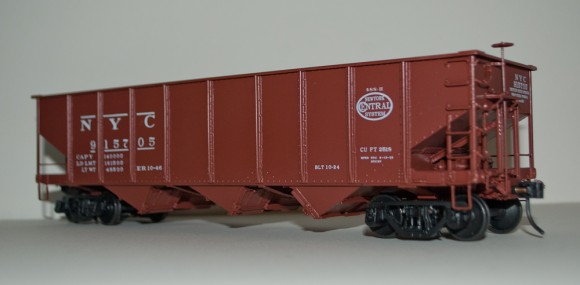
RY Models New USRA design 70-ton triple hopper
Imported By: RY Models
MSRP 12/2012: $326.00
Prototype History
Most modelers are familiar with the USRA 55-ton Twin open hopper. In O scale we have been blessed with the Intermountain USRA Twin as well as a number of brass versions over the years. What is not well known is that the USRA developed some designs for freight cars that were never built during the period of their control of the railroads, but some designs were built from afterwards. One example would be the NYC USRA designed Steel boxcar, another would be the 42′ Flat car that Red Caboose modeled.
RY Models has produced one of those USRA non-built designs, the USRA 70-ton triple.
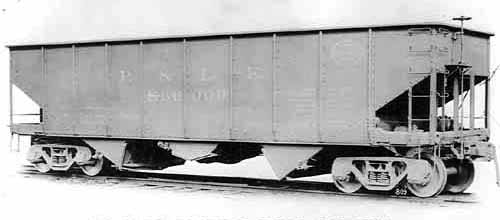
Standard Steel Car Company builders photo
Between 1922 and 1927, the C&O, New York Central, P&LE, PMcK&Y and Virginian Railroads adopted the USRA design and had cars built by Standard Steel Car Company (SSC), Pressed Steel Car Company (PSC), Richmond Car Works (RCW) and the American Car and Foundry Company (AC&F).
As built, the cars had a shallow center hopper, often referred to as a “clamshell” hopper. The cars went through different changes during their service life. Some of those changes included C&O cars being rebuilt with panel sides to try to increase the cubic capacity of the cars, some were rebuilt into covered hopper cars and all had their center “clamshell” hopper replaced with a regular saw-tooth hopper between 1939-1942.
Photos show different trucks under the cars, C&O were delivered with a 70-ton USRA style Andrews. The NYC and P&LE cars have been photographed with Keystone Trucks and also Verona trucks.
The C&O cars were built with a heap shields on the ends of the cars. There is an article on these cars with an as-built drawing of the cars in the July 2004 issue of Mainline modeler. The C&O rebuilt their cars starting in 1932 with panel sides. When completed the newly-rebuilt cars received a “1” was added in front of the original number to create a new number series. The cars were later rebuilt back to straight sides in later rebuilds.
The C&O rebuilt a total of 125 of the cars into covered hopper cars in 1938-1939. There is an article in Mainline Modeler October 2004 with drawings and very nice photographs of the cars as rebuilt and in service. There is also a pair of nice images of the open hoppers in this article.
The NYC, P&LE and PMcK&Y cars had their center hopper rebuilt over a period from 1939-1942. As they did their cubic capacity increased from 2508 to 2518. While that is not a big increase, it does give us a piece of data that can be tracked in the ORER’s so that we have an idea of the progress of the conversions. The cars were later rebuilt with AB Brakes.
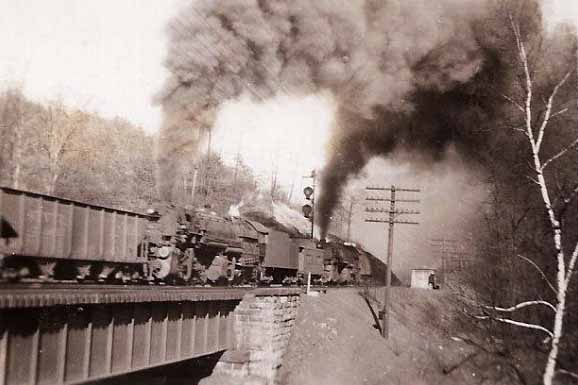
A pair of N1’s shove on a NYC USRA triple approaching Tamaqua Tunnel.
The Virginian cars went through some changes also. From 1924-1937 they were as-built with a clamshell middle hopper, K brakes and a vertical brake wheel and staff. From 1937-1947 they had their center hopper rebuilt, they kept their K brakes but the verticle brake staff was replaced with a power brake housing. From 1947-1959 they were rebuilt into their final configuration with AB Brakes. The Tennessee Central purchased 24 cars that had been retired from the Virginian.
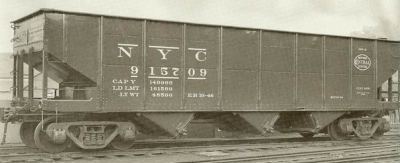
NYC 915709 with Keystone trucks – photo from RY Models Website
Roster of USRA 70 Ton Triple Hoppers Built
| Road |
Year |
Qty |
Builder |
Class |
Road Numbers |
Re-Numbered |
|
C&O
|
1927 |
900 |
RCW
|
H7-8
|
70000-70899
|
|
|
C&O
|
1927 |
250 |
RCW
|
H7-9
|
70900-71149
|
|
|
C&O
|
1927 |
250 |
AC&F
|
H7-9
|
71150-71399
|
|
|
HV
|
1923 |
1000 |
AC&F
|
H7-14
|
13000-13999
|
C&O 73000-73999 |
|
HV
|
1924 |
1000 |
SSC
|
H7-14
|
14000-14999
|
C&O 74000-74999 |
|
HV
|
1923 |
1000 |
SSC
|
H7-6
|
15000-15999
|
C&O 75000-75999 |
|
HV
|
1923 |
1000 |
AC&F
|
H7-6
|
16000-16999
|
C&O 76000-76999 |
|
NYC
|
1923 |
1500 |
SSC
|
466-H
|
425000-426499
|
908000-909499 |
|
NYC
|
1923 |
500 |
PSC
|
467-H
|
426500-426999
|
909500-909999 |
|
NYC
|
1924 |
5000 |
SSC
|
488-H
|
427000-431999
|
911000-915999 |
|
NYC
|
1924 |
1500 |
PSC
|
496-H
|
432000-433499
|
917000-918499 |
|
NYC
|
1925 |
500 |
SSC
|
499-H
|
433500-433999
|
918500-918999 |
|
P&LE
|
1922 |
1500 |
SSC
|
436-H
|
66000-67499
|
|
|
P&LE
|
1923 |
300 |
PSC
|
476-H
|
67500-67799
|
|
|
P&LE
|
1924 |
1000 |
PSC
|
495-H
|
56000-56999
|
|
|
P&LE
|
1925 |
500 |
PSC
|
525-H
|
57500-57999
|
|
|
PMcK&Y
|
1922 |
1500 |
PSC
|
435-H
|
53000-54499
|
|
|
VGN
|
1924 |
500 |
SSC
|
H-5
|
7000-7499
|
|
The Models
Since the NYC was a major interchange partner with the Reading Company at Newberry Yard in Williamsport, PA, I was excited when RY Models first announced they were going to produce the USRA 70-ton triple hopper. The January 1952 ORER lists a total of 33,936 open hopper cars on the NYC. Of those, 8846 (26%) were the USRA 70-ton triple. P&LE had 6255 cars listed and 3246 were the USRA triples or should we say, 51.9% of the total hopper cars on the roster. That being said, I needed some for the layout.
RY Models showed a pair of painted pilot models at last year’s O Scale National. I thought they looked nice then, I was pleased with the final results of the production run.
The cars came painted and lettered. The paint is nice and the lettering looks good. My models had the correct NYC lot numbers for the car numbers.
When I measured the models and checked them against the published drawings for these cars. They were spot on.
I’m modeling in1952 so, I bought all later cars with AB Brakes. I did have a question because the as-built versions should have two cross members inside the cars towards the ends. My later cars did not, but I could not locate any interior shots of the cars to know if the prototype had them later or not.
I am very pleased with my NYC and P&LE cars. Now they need some weathering.
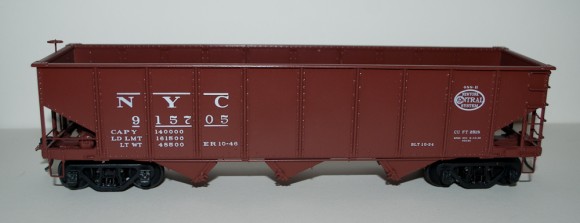
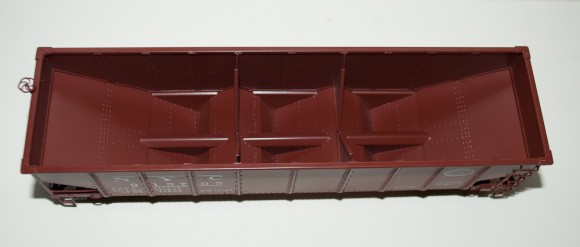
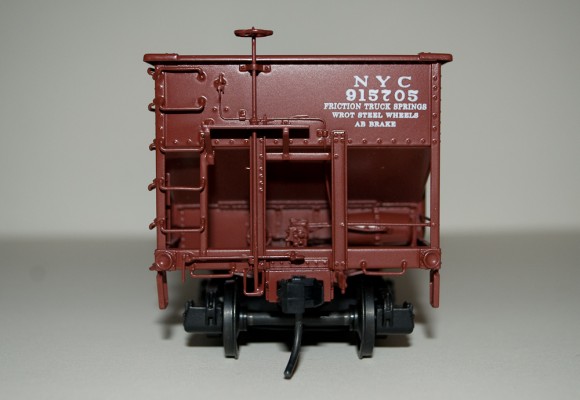
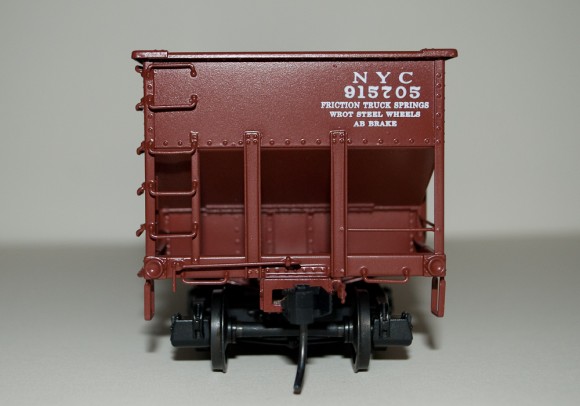
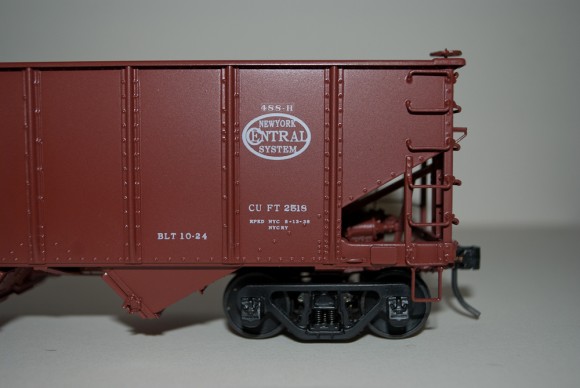
References
Mainline Modeler, July 2004, October 2004, August 1988 (panel side rebuild drawing)
Information Sheet by Larry Klien on the NYC, P&LE and PMcK&Y cars
Information Sheet by Steve Summers on the Virginian H-5
Online listing of NYC Classes
